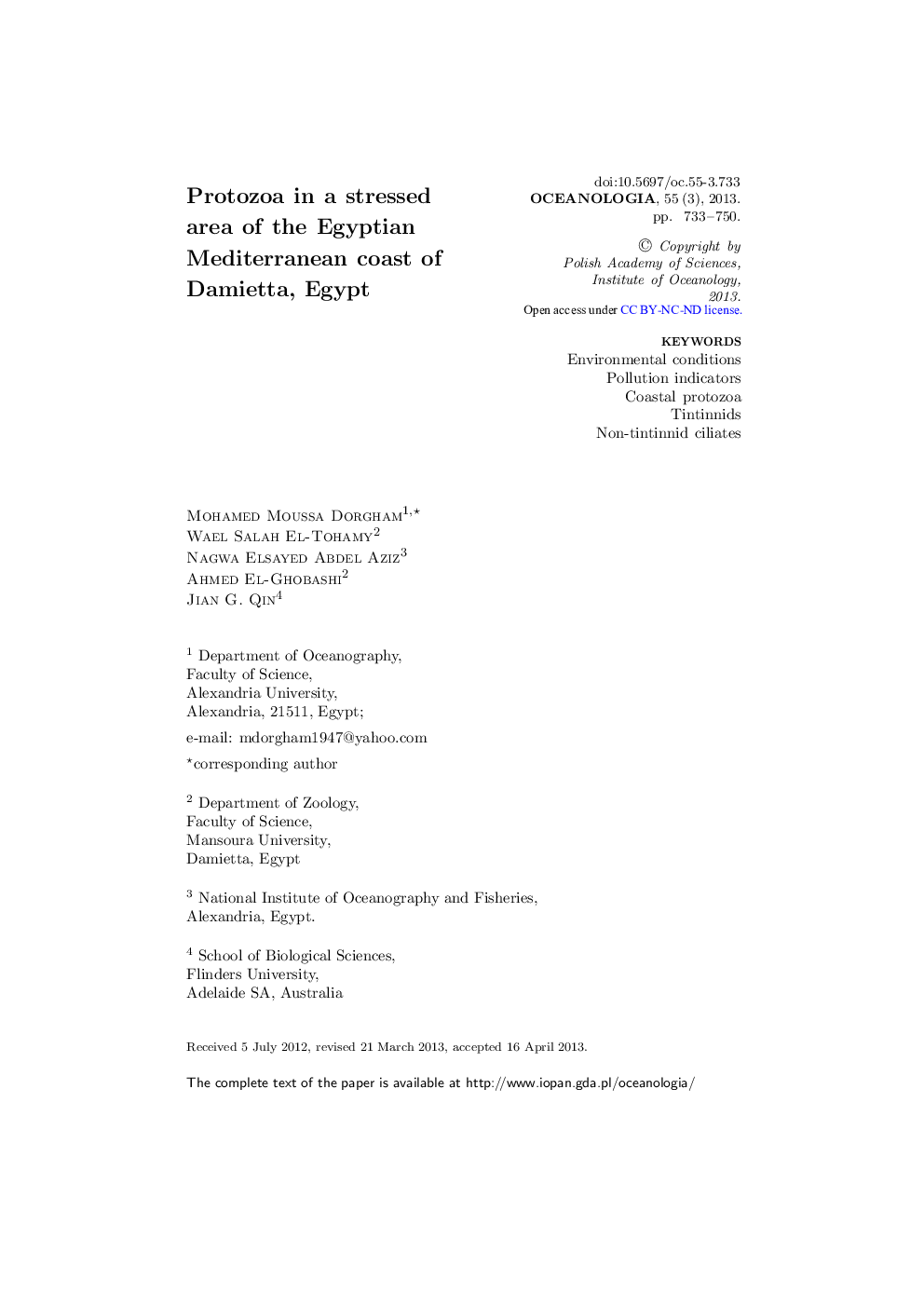| Article ID | Journal | Published Year | Pages | File Type |
|---|---|---|---|---|
| 2069903 | Oceanologia | 2013 | 18 Pages |
The Damietta coast is part of the Egyptian Mediterranean coast off the Nile Delta and has recently been polluted as a result of intensive human activities. The environmental parameters and protozoan community in the area were studied biweekly from January to December 2007. The results of the environmental parameters indicated low salinity, oxic and anoxic conditions, high nutrient levels and intensive phytoplankton growth. A total of 69 protozoan species were identified, belonging to Amoebozoa (8 species), Foraminifera (12 species), non-tintinnid ciliates (22 species) and tintinnids (27 species). The numerical density of protozoans was high over the whole area, with annual averages between 8.2 × 103 cells m− 3 and 51.4 × 103 cells m− 3. Spring was the most productive season for protozoans, but several distinct peaks were observed during the year at the sampling sites. The protozoan groups showed clearly different spatial patterns in both composition and abundance: whereas amoebozoans and non-tintinnid ciliates were dominant in the more polluted areas (sites IV and V), tintinnids dominated in the less polluted areas (sites, I, II and III). Several pollution indicators were recorded: amoebozoans – Centropyxis aculeata, Centropyxis sp., Cochliopodium sp., Difflugia sp.; non-tintinnids – Bursaridium sp., Frontonia atra, Holophrya sp., Paramecium sp., Paramecium bursaria, Vasicola ciliata, Vorticella sp., Strombidium sp.; tintinnids – Favella ehrenbergii, Helicostomella subulata, Leprotintinnus nordgvisti, Tintinnopsis beroidea, Stenosemella ventricosa, Tintinnopsis campanula, T. cylindrica, T. lobiancoi, Eutintinnus lusus-undae.
